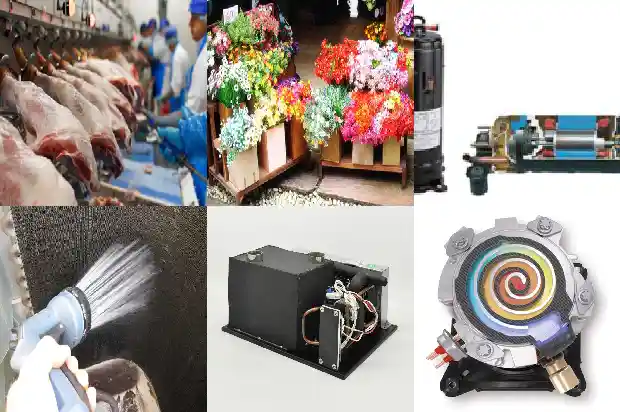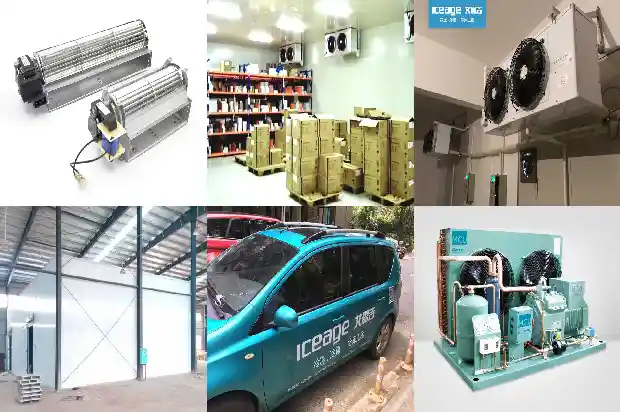Cold and Hyperinflation: Significance and Applications
2024-08-31
I. Suction Superheat
The suction superheat of a refrigeration system is divided into effective superheat and ineffective superheat. Effective superheat generally refers to the temperature rise that occurs in the evaporator and effectively participates in heat exchange and cooling.
The increase of effective suction superheat will increase the refrigerating capacity per unit mass, but the volume of the refrigerant gas will also become larger, resulting in a larger volume of the refrigerant per unit mass at the compressor inlet.
Assuming the pressure in the evaporator is 0.49 MPa, the saturation temperature is 5°C. The temperature between A and B in the saturated state is 5°C. The refrigerant between A and B is in a gas-liquid mixed state (latent heat). All the liquid between B and C has become gas. The state is a full gas state, and the surrounding heat will invade and cause the temperature to continue to rise (sensible heat), for example, to 10°C. At this time, the outlet temperature of the evaporator is 5°C higher than the temperature inside the evaporator. This state is called superheat.
For the section of pipeline between the evaporator of the indoor unit and the compressor, we say that during the operation of the compressor, it must be ensured that the refrigerant returning to the compressor is in a gas state (if there is liquid returning to the compressor, it is easy to cause damage to the compressor).
The suction superheat of a refrigeration system is divided into effective superheat and ineffective superheat. Effective superheat generally refers to the temperature rise that occurs in the evaporator and effectively participates in heat exchange and cooling.

The increase of effective suction superheat will increase the refrigerating capacity per unit mass, but the volume of the refrigerant gas will also become larger, resulting in a larger volume of the refrigerant per unit mass at the compressor inlet.
Assuming the pressure in the evaporator is 0.49 MPa, the saturation temperature is 5°C. The temperature between A and B in the saturated state is 5°C. The refrigerant between A and B is in a gas-liquid mixed state (latent heat). All the liquid between B and C has become gas. The state is a full gas state, and the surrounding heat will invade and cause the temperature to continue to rise (sensible heat), for example, to 10°C. At this time, the outlet temperature of the evaporator is 5°C higher than the temperature inside the evaporator. This state is called superheat.

For the section of pipeline between the evaporator of the indoor unit and the compressor, we say that during the operation of the compressor, it must be ensured that the refrigerant returning to the compressor is in a gas state (if there is liquid returning to the compressor, it is easy to cause damage to the compressor).
II. Subcooling
The so-called "subcooling" is to re-cool the saturated liquid after condensation through a certain device (such as a subcooler) and method (or measure) so that its temperature is lower than the saturated temperature under condensation pressure, which is called subcooling. Comparing the liquid temperature before subcooling with the temperature after subcooling, the difference is the "degree of subcooling".
Subcooling is to reduce the flash gas generated in the throttling process of the refrigerant liquid before throttling, reduce the specific volume of the flash gas occupying the volume, and increase the refrigerating capacity per unit; at the same time, it also increases the superheat of the return gas, which has certain benefits for protecting the compressor from operating in a wet stroke.
Taking R22 refrigerant as an example, assuming the pressure in the condenser is 1.64 MPa, the saturation temperature is 45°C. The temperature between A and B in the saturated state is 45°C. The refrigerant between A and B is in a gas-liquid mixed state. All the gas between B and C has become liquid. The state is a full liquid state, and it continuously dissipates heat to the surrounding area and causes the temperature to continue to drop (obviously), for example, to 40°C. At this time, the outlet temperature of the condenser is 5°C lower than the temperature inside the condenser. This state is called subcooling. We say that the refrigerant flowing out at this time has a subcooling degree of 5°C.
In engineering, the exhaust pressure is generally approximated as the condensation pressure. The difference between the saturation liquid temperature corresponding to the exhaust pressure and the temperature of the liquid at the condenser outlet is taken as the degree of subcooling. The reason for this approximation is that the pressure drop of the condenser is relatively small compared to the evaporator. The difference between the exhaust pressure and the real condensation pressure is small, and the error caused by such an approximation can be ignored.
The so-called "subcooling" is to re-cool the saturated liquid after condensation through a certain device (such as a subcooler) and method (or measure) so that its temperature is lower than the saturated temperature under condensation pressure, which is called subcooling. Comparing the liquid temperature before subcooling with the temperature after subcooling, the difference is the "degree of subcooling".
Subcooling is to reduce the flash gas generated in the throttling process of the refrigerant liquid before throttling, reduce the specific volume of the flash gas occupying the volume, and increase the refrigerating capacity per unit; at the same time, it also increases the superheat of the return gas, which has certain benefits for protecting the compressor from operating in a wet stroke.
Taking R22 refrigerant as an example, assuming the pressure in the condenser is 1.64 MPa, the saturation temperature is 45°C. The temperature between A and B in the saturated state is 45°C. The refrigerant between A and B is in a gas-liquid mixed state. All the gas between B and C has become liquid. The state is a full liquid state, and it continuously dissipates heat to the surrounding area and causes the temperature to continue to drop (obviously), for example, to 40°C. At this time, the outlet temperature of the condenser is 5°C lower than the temperature inside the condenser. This state is called subcooling. We say that the refrigerant flowing out at this time has a subcooling degree of 5°C.
In engineering, the exhaust pressure is generally approximated as the condensation pressure. The difference between the saturation liquid temperature corresponding to the exhaust pressure and the temperature of the liquid at the condenser outlet is taken as the degree of subcooling. The reason for this approximation is that the pressure drop of the condenser is relatively small compared to the evaporator. The difference between the exhaust pressure and the real condensation pressure is small, and the error caused by such an approximation can be ignored.
